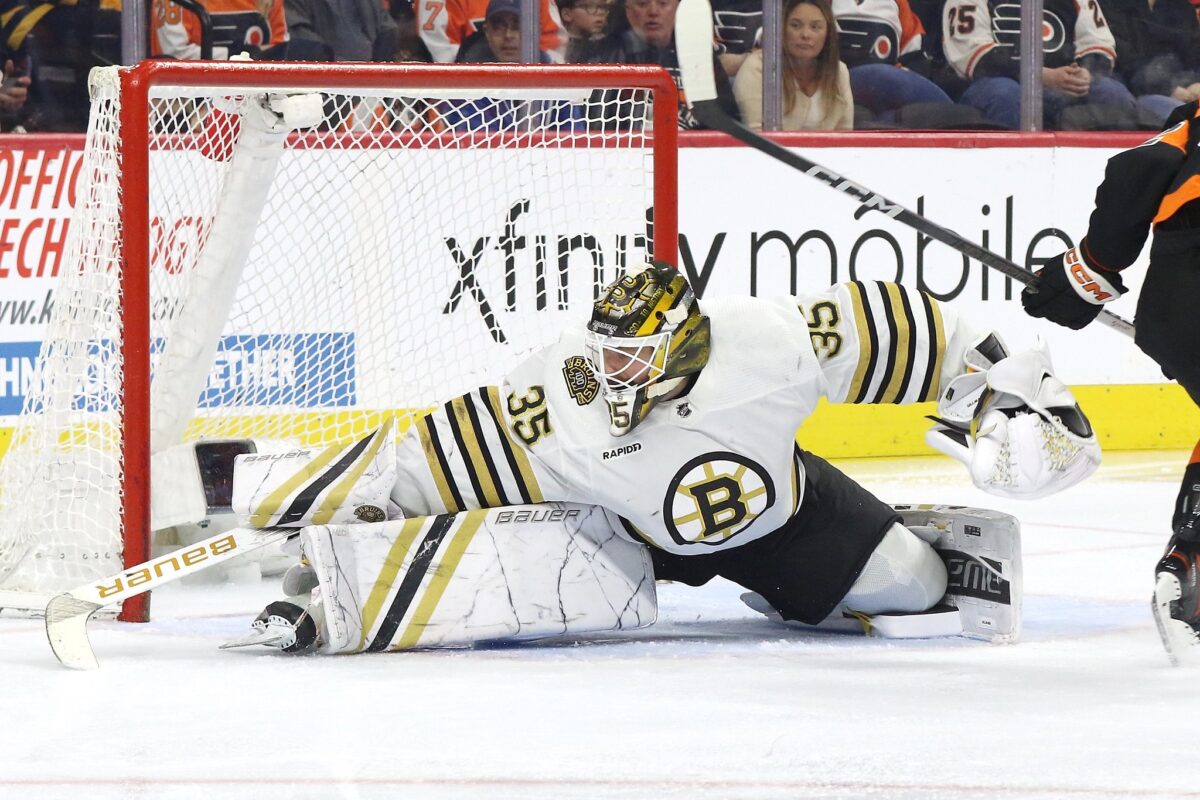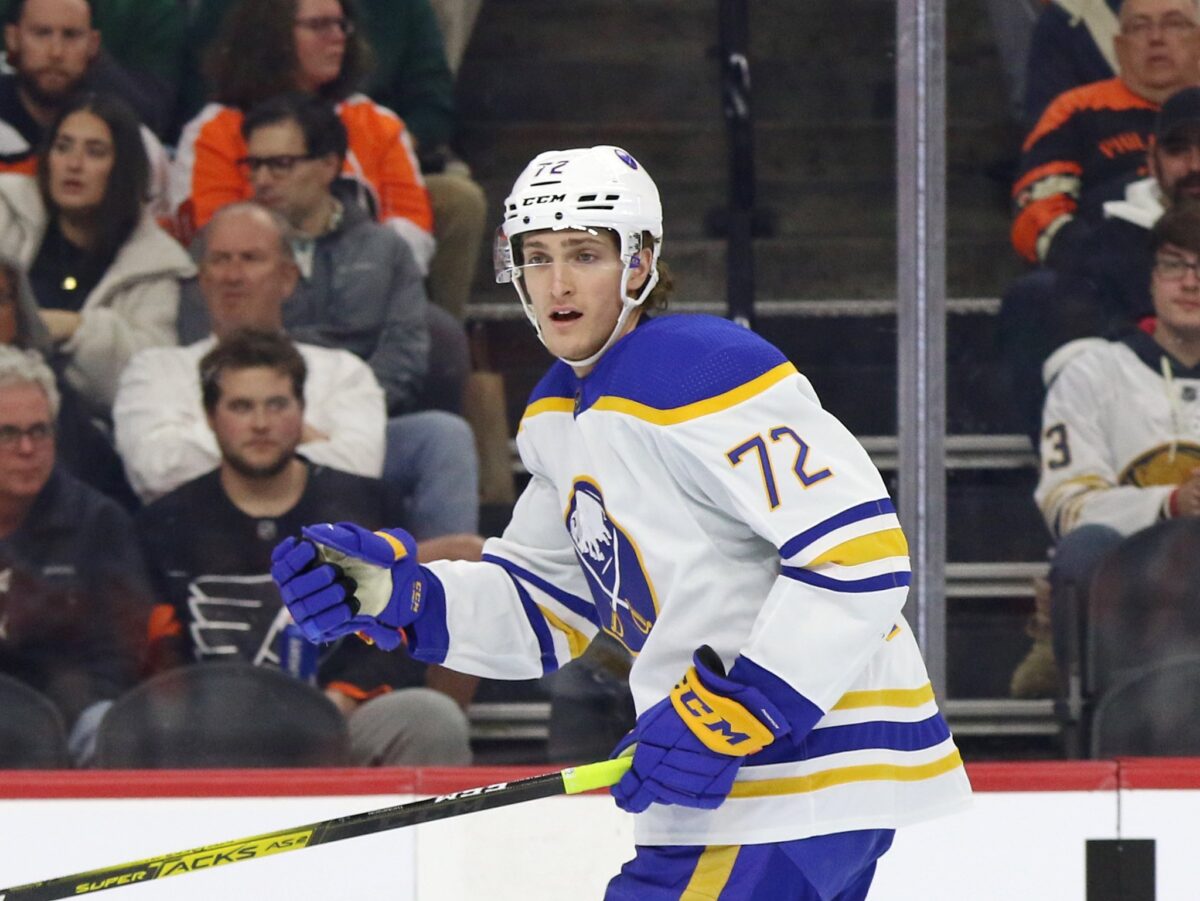Based on their lack of activity in free agency, the Montreal Canadiens are clearly going for organic growth in the standings in 2024-25. Bless his heart, Alex Barre-Boulet can only do so much as a fringe NHLer. Their younger players will have to take the next steps in their development for the team to take the next step itself.
Expectations are nonetheless higher, but not to the point analysts have the Canadiens making the playoffs next spring, which is fair. They did just finish fifth from last after all. And, while making the playoffs the next season in such a situation is possible, the Habs have a lot more work to do. Nevertheless, assuming they stay healthy, simply competing for a spot is a realistic goal.
Related: Canadiens’ Top One-Season Turnarounds in Team History
On the flip side, the Canadiens admittedly finished last in the Atlantic Division in 2023-24. They’ve got three non-playoff teams above them in a similar boat, each with fanbases hoping for greater things next season. For the Habs to come closer to making the postseason, they’d of course have to leapfrog them to start. However, there’s good reason for fans to be optimistic in each case.
Assuming the status quo holds true and all the Atlantic teams that made the playoffs last season will again (for the sake of simplicity), it’s worth looking at how the offseasons of the three non-playoff Atlantic teams have gone so far. Despite popular opinion to the contrary, the Canadiens stack up well on paper, making a rise up the standings at least possible.
Ottawa Senators
The Ottawa Senators have the benefit of the shortest playoff drought of the teams on this list (excluding the Canadiens), at seven seasons. However, in a way, based on how they had declared the rebuild over a few seasons ago, it’s arguably a source of greater embarrassment, especially seeing as they finished just two points above the Habs in the Atlantic in 2023-24 (78 points). While it’s unfair to say they’ve gotten worse, based on their sheer amount of young talent, they definitely haven’t gotten better.
If the Canadiens are so off from making the playoffs in the eyes of so many, shouldn’t the Senators be seen similarly, looking only at the standings, anyway? Yes, but, with the offseason addition of the Vezina Trophy-winning Linus Ullmark (2023) in net, the idea is they’ve finally addressed what ails them. You can conveniently disregard how the now-31-year-old Ullmark had been unable to take the Buffalo Sabres (a later entry on this list) to the promised land, having played for them in some capacity from 2015-21.

There is no denying Ullmark deserved his Vezina. That 2022-23 record-setting Boston Bruins season, he went 40-6-1 with a 1.89 GAA and .938 SV%. However, it should be cause for concern among Senators fans that he began regressing to the mean in 2023-24, going 22-10-7, with a 2.55 GAA and .915 SV%. Those are still great numbers (worthy of the first-round pick the Sens gave up to acquire him). However, the Sens aren’t the Bruins.
Put simply, you can’t expect Ullmark to cover up all the Senators’ holes. To be fair, he should help address the 28th-ranked 3.43 goals against per game (tied with the Canadiens for the record). And their 13th-ranked 29.7 shots against per game weren’t bad. However, Nick Jensen won’t realistically have more of a net-positive impact on defense than outgoing Jakob Chychrun, for whom he was traded. Chychrun, who is more offensively inclined, is more valuable, with the Sens having just finished 20th in terms of offense (3.05 goals per game).
The Senators did just sign David Perron as an unrestricted free agent to help with the offense (along with Michael Amadio and Noah Gregor). However, Perron is 36 and is more of a half-point-per-game player at this stage, but only if he’s given top-six minutes. With the Sens having lost Chychrun on defense and Vladimir Tarasenko and the under-appreciated Mathieu Joseph up front, arguing the team has improved so significantly that they’ll make the playoffs is not easy, even assuming they get full seasons out of Josh Norris and Shane Pinto. So, by virtue of an overrated offseason on the part of the Sens and the just two points between them and the Habs, they remain a team well within striking distance of the latter.
Detroit Red Wings
The Detroit Red Wings came closest to making the playoffs last season, with 91 points, tied with the eighth-place Washington Capitals. Actually facing the Canadiens on back-to-back nights to close out the regular season, they lost out on a lack of regulation wins, which was the first tiebreaker. Just for the record, the Habs didn’t actually figure into the end result despite taking the Wings to the limit on each occasion, losing in overtime and a shootout (5-4 in each case). The regulation-win gap was too large to possibly make up the difference.
All that to say, in principle, it would be a massive disappointment for Red Wings fans for them to miss the playoffs for what would be a ninth straight season. This will be kind of a recurring theme on this list, one that kind of puts the Canadiens’ struggles into perspective.
Not only would it be a disappointment, but it would at least in some circles be unexpected for the Red Wings not to take the next step. After all, they’ve improved in terms of points each season since totalling just 39 in 71 games in 2019-20. Here’s the argument as to why they won’t though… or at least not enough to finally make the playoffs:
Via free agency, they’ve effectively replaced goalie James Reimer with Cam Talbot, defenseman Shayne Gostisbehere with Erik Gustafsson and Perron with Tarasenko up front. However, up front, they also lost Daniel Sprong to free agency and Robby Fabbri to the Anaheim Ducks via trade (for a 2025 fourth-round pick and ECHL goalie Gage Alexander). In principle Tarasenko, who’s obviously on the back nine of his career at this point, having only played 13:22 per game during the playoffs for the Florida Panthers (less than Eetu Luostarinen and Evan Rodrigues), is a minor upgrade offensively over Perron. However, it’s not guaranteed that Tarasenko outscores Perron from last season (17 goals, 47 points). It’s definitely not guaranteed Tarasenko replaces the output of Perron, Fabbri and Sprong altogether, with Tyler Motte being the only other significant addition by the Wings up front.
While the offense wasn’t necessarily the issue for the Red Wings, the defense was, as they outscored the opposition by just four goals. Replacing a 56-point Gostisbehere with a 31-point Gustafsson, who’s similarly known as having defensive shortcomings, won’t really help. Neither will trading the underrated Jake Walman to the San Jose Sharks, as the Wings seemingly make room for prospect Simon Edvinsson.
Goaltending was another huge weakness, with Alex Lyon taking the reins to play 44 games, outplaying Ville Husso, who’s remained in the fold, and Reimer. However, Lyon, who is going on 32, hasn’t established himself as a legit NHL goalie at this point. His .904 save percentage (SV%) and 3.05 goals-against average (GAA) last season leave something to be desired. If Talbot is the Wings’ answer, fans shouldn’t be satisfied with how many question marks remain, as he’s 37, and, while competent, hasn’t proven himself capable of being a difference-maker on teams with a history of defensive problems. As a result, the Red Wings aren’t the playoff shoo-ins everyone might assume.
Buffalo Sabres
Oddly enough, the Sabres are one of the biggest examples as to why the Wings may not take that next level. Flash back to 2022-23. The Sabres missed the playoffs by a single point, convincing everyone they were on the cusp. The ended up regressing, falling from 91 points in the standings to 84, making it 13 straight non-playoff seasons, as star Tage Thompson failed to build on a 94-point 2022-23, scoring just 56 instead.

Assuming the Sabres re-sign No. 1 goalie Ukko Pekka-Luukkonen (they must, because the newly acquired Reimer isn’t an asset in net at this point), two other things need to happen for them to make the playoffs. Firstly, Thompson must rebound, because none of their other acquisitions up front (Jason Zucker, Nicolas Aube-Kubel, Sam Lafferty, Ryan McLeod and Beck Malenstyn) really make up for the loss of offense the departed Jeff Skinner and Victor Olofsson (and all-star Zemgus Girgensons) would have provided on paper.
Granted, neither Skinner nor Olofsson had good years by their standards. However, if you’re expecting Thompson to rebound, you should reasonably give them the same benefit of the doubt. The bottom line is, the status quo won’t do, which is why, more than the Red Wings, maybe even more than the Senators, the Sabres are probably counting on all their young players to develop significantly on the fly: Zach Benson, Peyton Krebs, Jack Quinn, etc.
That’s the second thing that must happen, which, to a degree, puts the Sabres not just in a similar boat but the same one as the Canadiens. The Sabres are the youngest team in the NHL (per Left Wing Lock). The Canadiens aren’t far off as No. 4, with Cole Caufield, Kirby Dach, Alex Newhook, Juraj Slafkovsky, Nick Suzuki, Kaiden Guhle, effectively their core, all 25 years of age or younger.
The Canadiens may not have a game-breaking talent like Thompson (at least not in the immediate future, following the drafting of Ivan Demidov). However, if the game-breaking talent isn’t performing, you have to look elsewhere. Wherever you do, you’ve got young players on both rosters. It begs the question, in which group do you have more faith?
Maybe the three entries above have indeed improved this offseason, but not by the leaps and bounds their respective fans might argue, based on this list of the most improved teams via free agency. None made it. The Canadiens may not have made a major acquisition, but they also didn’t lose anyone significant either. So, the question becomes, how much faith do you have in the progression of the young team general manager Kent Hughes has put together, one that has improved significantly, at least in terms of points, the last two seasons? A third shouldn’t be out of the question.
